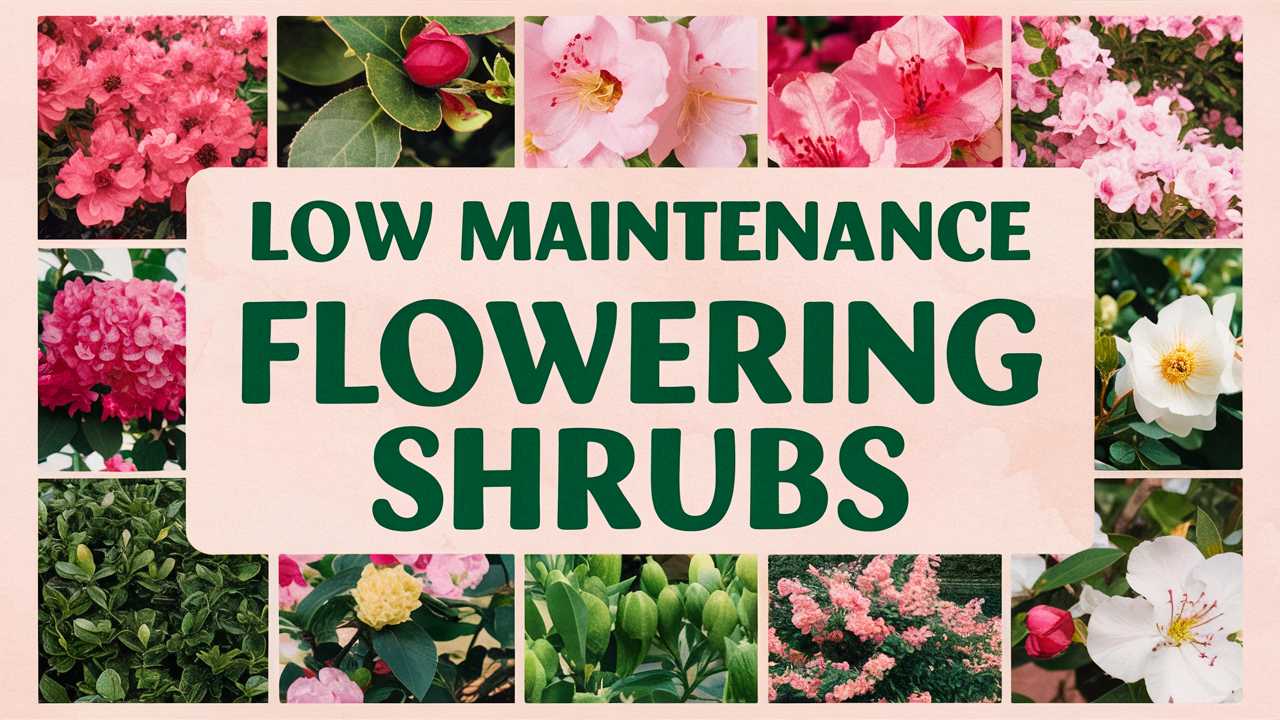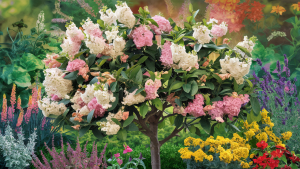In this comprehensive guide, we will explore some of the most delightful options for your garden that require minimal intervention while adding charm and color throughout the seasons. Let’s dive into these resilient beauties!
Smooth Hydrangea

Smooth hydrangea (Hydrangea arborescens) is a fantastic choice for gardeners looking for an easy-to-care-for flowering shrub. With its large, dome-shaped clusters of white or pale pink flowers, this shrub provides a beautiful contrast against its rich green foliage.
What makes smooth hydrangea particularly appealing is its adaptability to various soil types and moisture levels. It thrives in part shade to full sun and can tolerate a wider range of pH levels. Pruning is straightforward; simply cut back the stems in late winter or early spring before new growth begins, encouraging robust blooms. With minimal requirements and a flowering display that can last from early summer into fall, smooth hydrangeas are a perfect landscaping choice.
Butterfly Bush
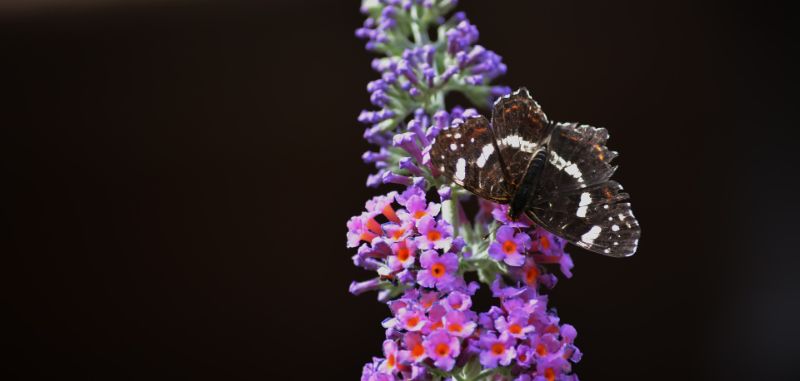
The butterfly bush, or Buddleja davidii, is aptly named for its ability to attract butterflies and other pollinators to your garden. This hardy shrub showcases long, arching spikes of tiny flowers in various colors, including purple, blue, pink, and white.
Butterfly bushes thrive in full sun and well-drained soil, making them easy to grow in a variety of garden settings. They are drought tolerant once established and require little pruning—just trim them back in late winter to encourage new growth. With their vibrant flowers and enchanting fragrance, butterfly bushes create a vibrant focal point in any flower garden while supporting local wildlife.
Native Azalea
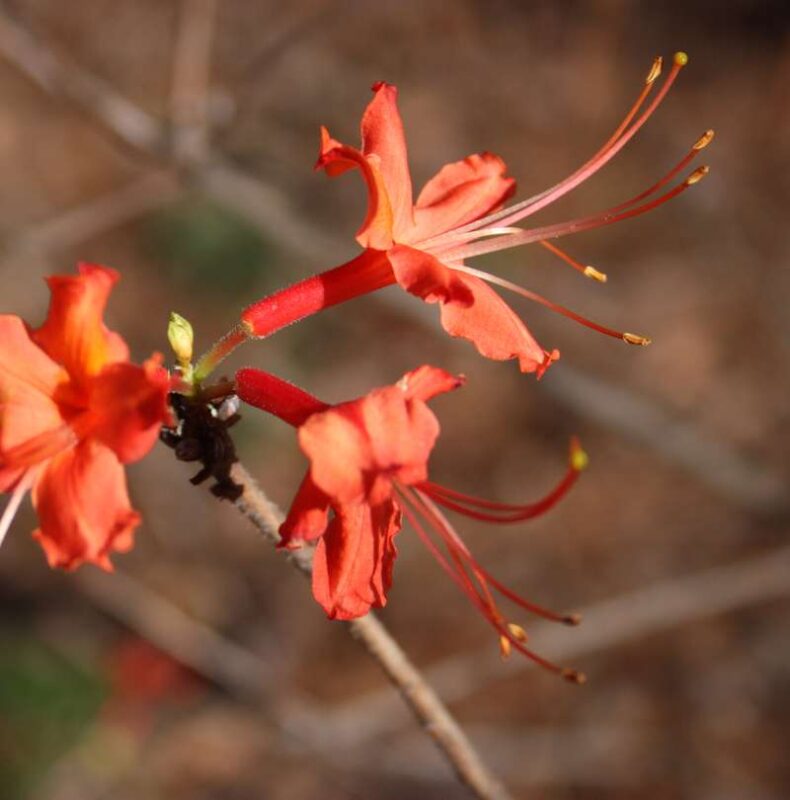
For those seeking to incorporate native flora into their landscape, the native azalea is a stunning, low-maintenance choice. Renowned for their delicate, fragrant blooms in shades ranging from yellow to bright pink, these shrubs thrive in acidic, well-drained soils.
Native azaleas require partial shade and offer an excellent option for woodland-themed gardens. They have adapted well to various environmental conditions, making them hardy without requiring constant care. Regular watering, especially during dry spells, will optimize their performance, but these beautiful shrubs tend to flourish with minimal fuss. Their springtime blooms and vibrant fall foliage make them a true asset to any landscape.
Forsythia
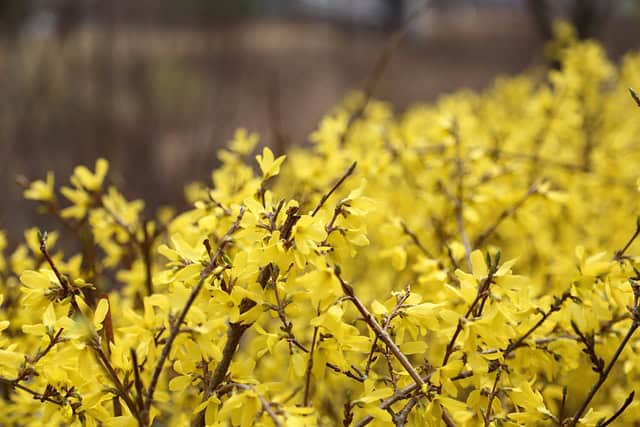
Forsythia is a classic spring-flowering shrub that heralds the warmer months with its vibrant yellow blossoms. Known scientifically as Forsythia suspensa, this adaptable shrub is easy to grow in a range of soil types.
Forsythia thrives in full sun and can tolerate urban conditions, making them an excellent choice for city gardens. They require little maintenance outside of an occasional pruning to shape the bush and promote healthier growth. Their cheerful yellow blooms provide a beautiful early spring display and can be effective as a privacy screen or border in your yard.
Spirea

If you’re looking for an easy-going shrub suited for various settings, spirea is an excellent option. These hardy shrubs produce lovely clusters of small flowers in shades of pink, white, or red depending on the variety. Spirea comes in multiple cultivars, offering versatility in size and flower color.
Spirea grows best in full sun and well-drained soils but shows remarkable resilience, adapting easily to various environments. They require minimal pruning, and many varieties bloom multiple times throughout the season, ensuring continued color in your garden. With summer blooming spireas like Spiraea japonica and spring-blooming options like Spiraea nipponica, you can enjoy a wide range of beauty with very little effort.
Lilac
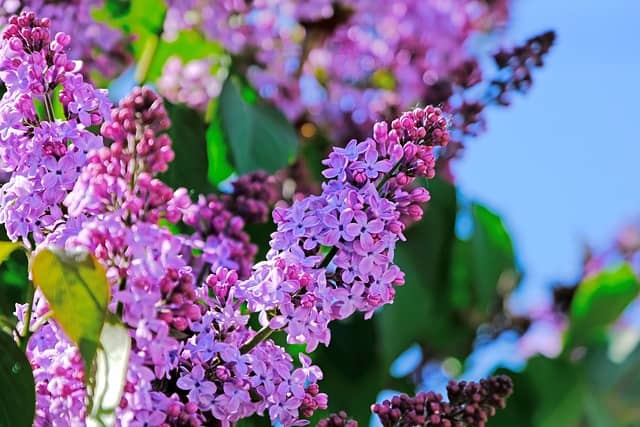
Lilacs, particularly the common lilac (Syringa vulgaris), are adored for their enchanting perfumes and showy clusters of flowers in lilac, violet, or white shades. They are a classic in many gardens, thriving in well-drained soil and full sun for gorgeous blooms in late spring.
While lilacs do appreciate a little pruning to remove spent blooms and promote air circulation, they are notoriously low-maintenance overall. Once established, these beautiful shrubs are quite drought-tolerant and can withstand occasional neglect. Their sweet scent combined with attractive heart-shaped leaves makes them a delight that can evoke nostalgic memories while requiring minimal care.
Rose of Sharon
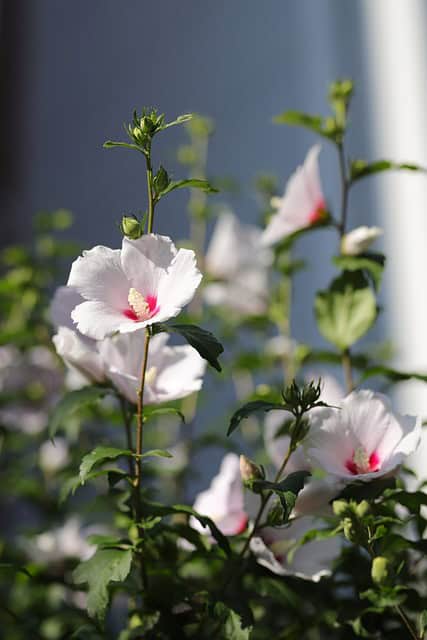
The rose of Sharon (Hibiscus syriacus) is a spectacular flowering shrub that brings a tropical flair to any garden. With its large blooms that can show off colors ranging from blue to purple and even white, this hardy shrub is both attractive and low-maintenance.
Rose of Sharon thrives in full sun and can withstand periods of drought, making it a tough contender in various climates. The best part? It requires minimal pruning and can be shaped to fit your garden aesthetic. These shrubs also produce interesting seed pods in the fall, providing visual interest even when they aren’t in bloom. With their bold blooms and extended flowering season, rose of Sharon is ideal for those seeking beauty without the extra effort.
Weigela
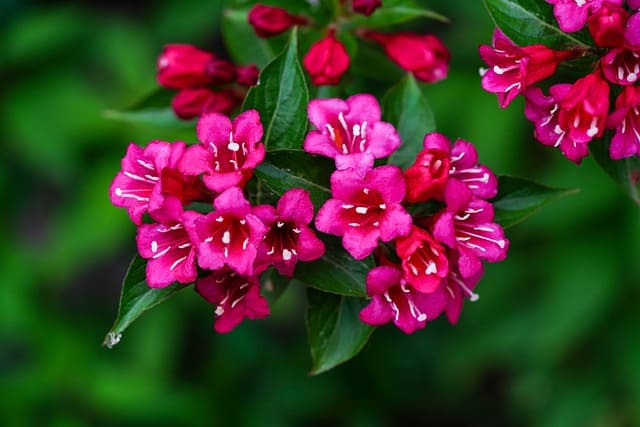
Weigela, particularly Weigela florida, is a charming shrub that delights with its trumpet-shaped flowers in shades of pink, red, or white. This late spring bloomer attracts hummingbirds and bees, making it a great choice for a wildlife-friendly garden.
These shrubs thrive in full sun but can adapt to partial shade, requiring very little maintenance. Regular pruning can enhance growth and encourage abundant blooming; however, the plant maintains its appearance even with infrequent attention. Weigela’s glossy green leaves and classic shape make it a lovely addition to borders or mixed flower beds.
Viburnum
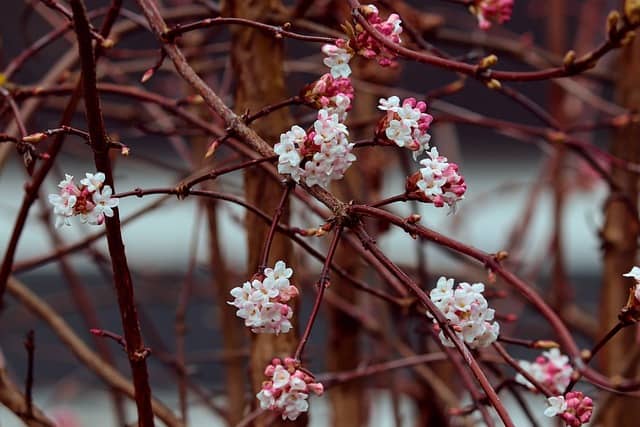
Viburnum, a diverse group of flowering shrubs, offers a wealth of options for the gardener. From the fragrant blooms of Viburnum carlesii to the striking color of Viburnum plicatum, there’s a viburnum for every taste. These shrubs provide rich foliage, clusters of tiny flowers, and often stunning fall color.
Many viburnum species are relatively low-maintenance, thriving in full sun to partial shade and adapting well to a variety of soil types. Pruning encourages better air circulation and prevents overcrowding but isn’t always necessary. Viburnums are renowned for their hardiness and ability to attract pollinators while providing visual interest across seasons.
Bluebeard
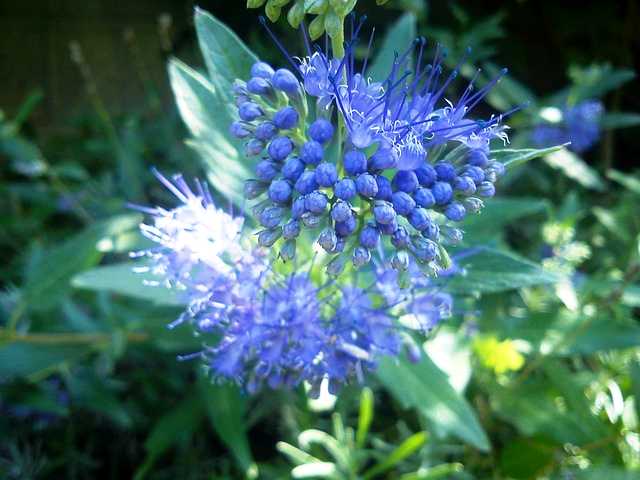
Bluebeard, or Caryopteris, is an underappreciated gem in the low-maintenance flowering shrub category. This delightful shrub showcases stunning, aromatic blue or purple flowers that bloom in late summer, filling the garden with color when many other plants have finished flowering.
Bluebeard thrives in sunny locations and well-drained soils, making it tolerant of drought conditions. It typically requires minimal care, with only occasional pruning needed to manage its size and shape. Additionally, its aromatic leaves provide an enticing scent when brushed against, attracting pollinators like butterflies and bees to your garden. This colorful and hardy shrub will undoubtedly bring extra charm to your landscape.
Beautyberry
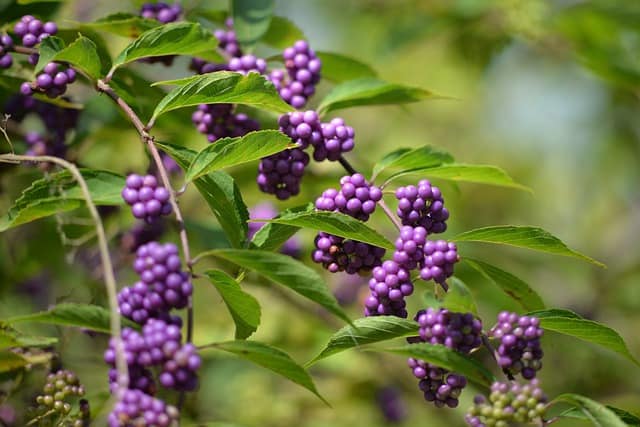
Beautyberry (Callicarpa americana) is a unique shrub known for its vibrant purple berries that appear in late summer to fall. The berries, which emerge on bare stems, create an eye-catching display that persists well into winter.
This native shrub thrives in partial shade to full sun and adapts well to various soil types. Beautyberries are low-maintenance, requiring minimal care outside of occasional pruning to shape and remove any dead branches. They attract birds and other wildlife, adding ecological benefits to their visual appeal. The combination of foliage throughout the growing season and colorful berries in the fall makes beautyberry a notable choice for any garden.
Ninebark
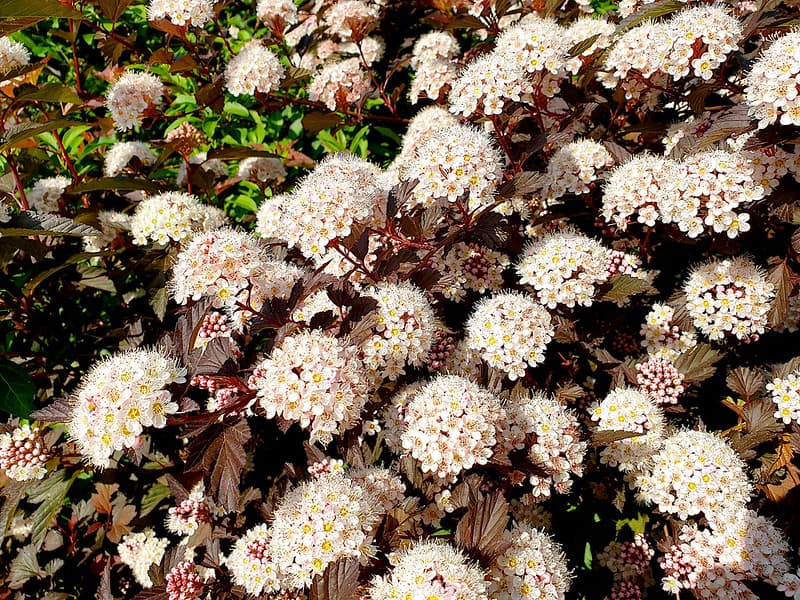
Ninebark (Physocarpus opulifolius) is a versatile, low-maintenance shrub celebrated for its unique peeling bark and stunning foliage. This adaptable plant features clusters of small white or pink flowers in spring, followed by vibrant fall color.
Ninebark is very tolerant of various soil conditions, thriving in both sun and shade. Its robust nature means it typically requires little water once established. Pruning can enhance its appearance and encourage healthier growth—simply trim back the shrub in late winter or early spring. The interesting bark texture and gorgeous flowers make ninebark an attractive, low-maintenance addition to borders or mixed plantings.
Potentilla
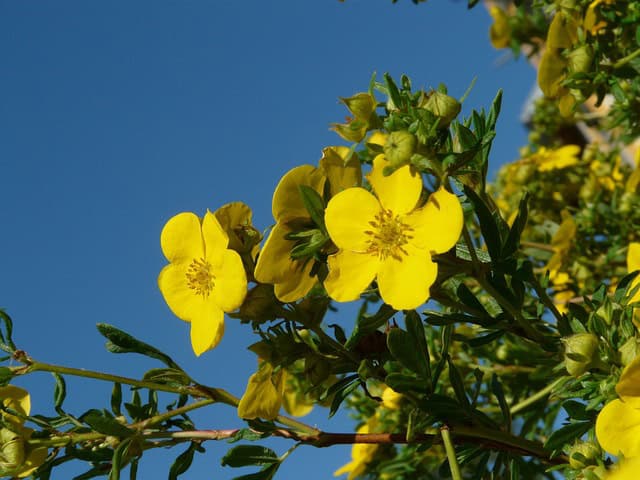
Potentilla, also known as cinquefoil, is a delightful shrub that blooms profusely with small flowers in colors ranging from yellow to pink. This hardy plant is known for its long blooming season, providing color from spring to frost.
These compact shrubs are incredibly easy to care for, thriving in full sun and adapting to various soil types. Potentilla prefers well-drained soil but is somewhat tolerant of drought conditions. An occasional pruning will keep the shape tidy and promote floriferous growth. These cheerful shrubs are perfect for low-maintenance gardens while creating visually appealing hedge lines or borders.
Abelia
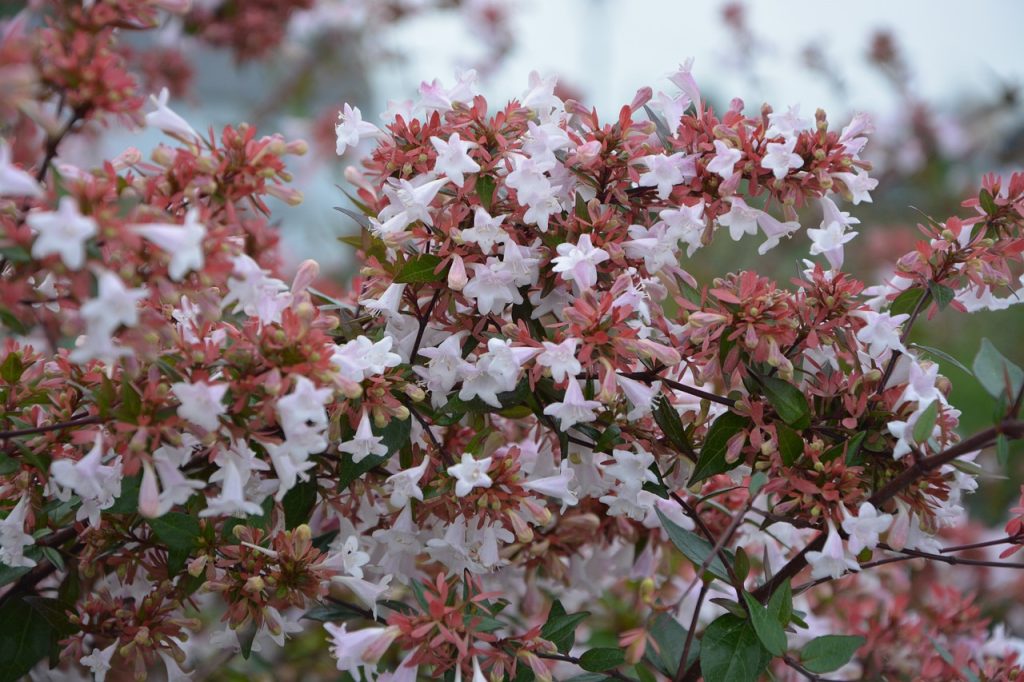
Abelia, particularly Abelia x grandiflora, is a charming flowering shrub with gracefully arching branches and glossy leaves. These resilient plants produce small, fragrant flowers that attract hummingbirds and butterflies, adding a lively ambiance to your garden.
Abelias thrive in sunny locations and tolerate poor soil conditions, requiring minimal upkeep. These shrubs can be selectively pruned to maintain a well-structured appearance, although they don’t require extensive trimming throughout the year. Their stunning summer blooms and beautiful fall foliage make abelia a great choice for those who want low-maintenance beauty in their landscape.
Summersweet
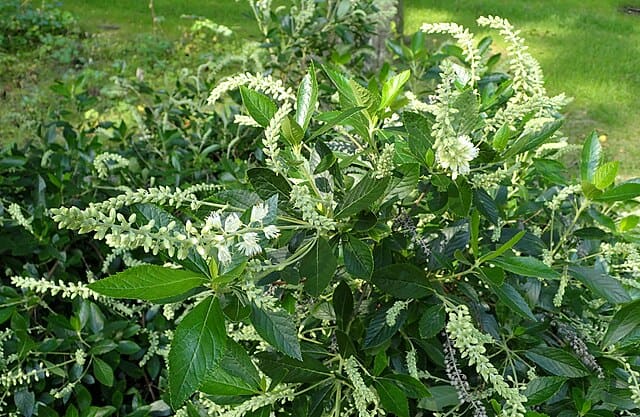
Summersweet (Clethra alnifolia) is a resilient shrub that offers a delightful fragrance, making it highly desirable for gardens. Known for its spikes of fragrant white or pink flowers during the summer months, it attracts butterflies and other beneficial pollinators.
This adaptable shrub flourishes in a variety of conditions, from partial shade to full sun, and is tolerant of wet soils, making it suitable for many environments. Summersweet requires minimal pruning, although it can benefit from some grooming in late winter. Its enchanting scent during the summer and beautiful foliage throughout the year provides excellent ornamental value with effortless care.
Winterberry Holly
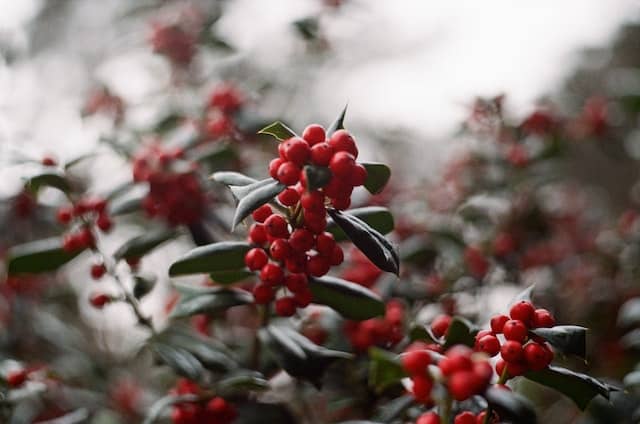
Winterberry holly (Ilex verticillata) is a deciduous holly known for its brilliant red berries that persist throughout the winter months. This shrub provides an unmatched splash of color and draws birds to your garden during the colder season.
Winterberry prefers moist, acidic soils and thrives in full sun to partial shade. While it does benefit from some pruning to maintain its shape, particularly removing old wood, it is generally low-maintenance overall. The combination of striking winter berries against a backdrop of bare branches makes winterberry holly a distinctive choice for any natural landscape.
Russian Sage
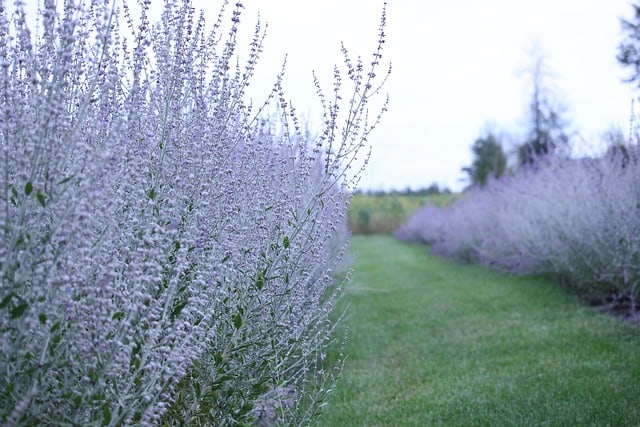
Russian sage (Perovskia atriplicifolia) has gained popularity in gardens for its stunning silver foliage and tall spikes of bluish-purple flowers. This hardy perennial shrub is remarkably drought-tolerant, making it perfect for low-maintenance landscaping.
Thriving in full sun, Russian sage is well-suited for poor soil conditions and does not require regular amendments. Pruning can be done in late winter or early spring to promote new growth, but these shrubs can usually maintain a beautiful appearance with minimal intervention. Their distinctive color contrast and easy-going nature make Russian sage an excellent choice for adding pizazz without hassle.
Fothergilla
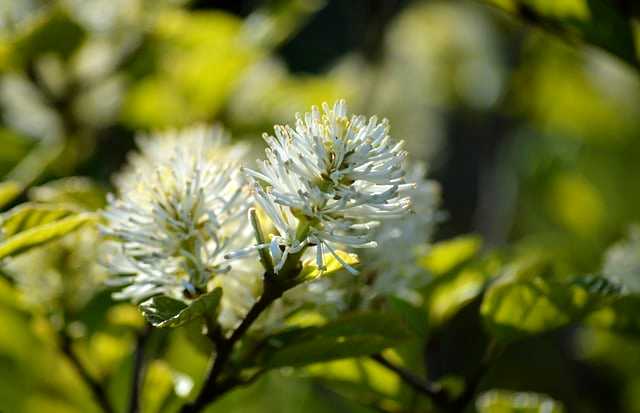
Fothergilla is truly a garden gem with its unique, fragrant bottlebrush-like flowers in spring. The dense foliage of this shrub turns an array of vivid colors in the fall, creating a stunning display.
This shrub prefers partial shade and well-drained soil but can adapt to a variety of conditions. Minimal pruning helps maintain shape and size, making it easy to manage. With its delightful fragrance and breathtaking fall colors, fothergilla offers a unique twist among low-maintenance flowering shrubs.
Texas Sage
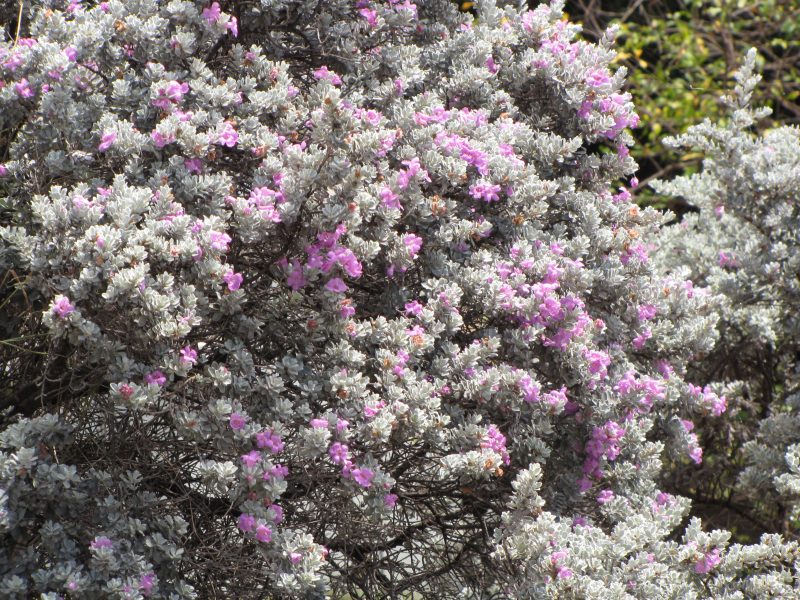
Texas sage, also known as Leucophyllum frutescens, features aromatic gray-green leaves and striking purple flowers that bloom during hot summer months. This resilient shrub is native to the southwestern United States and is built to withstand drought conditions.
Texas sage thrives in full sun and well-drained soils, requiring very little moisture once established. Regular pruning can help maintain shape and encourage denser foliage. The vibrant flowers and aromatic leaves provide an appealing addition to xeriscape gardens or any low-maintenance landscape.
Mock Orange
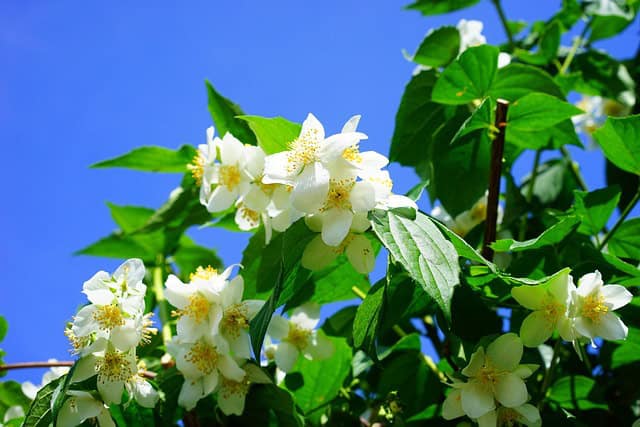
Mock orange (Philadelphus spp.) is loved for its delightful fragrance and beautiful white blooms that resemble orange blossoms. This charming shrub brightens gardens with its highly fragrant flowers in late spring to early summer.
This hardy plant is adaptable to various soil types and prefers sunny locations but will tolerate some shade. Mock orange generally requires minimal pruning aside from occasional shaping to maintain its structure. Its timeless charm and pleasing aroma make mock orange an unbeatable choice for gardeners seeking low-maintenance options.
Japanese Kerria
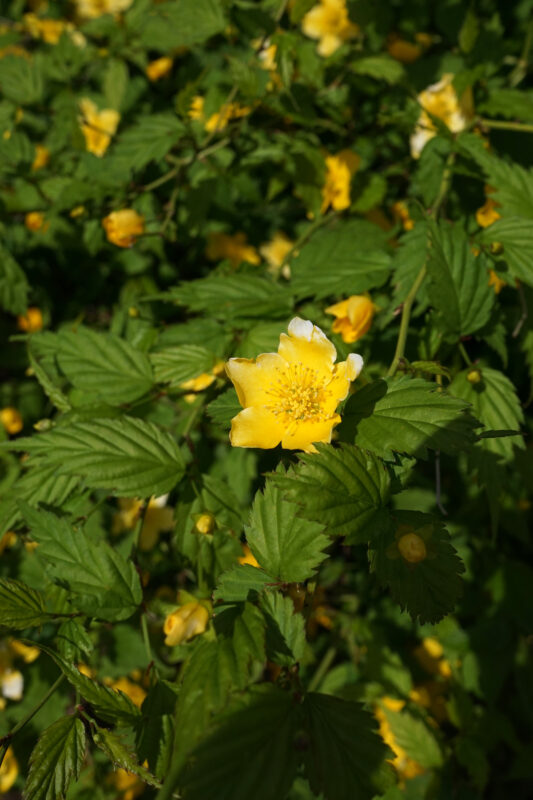
Japanese kerria (Kerria japonica) is a delightful shrub that brightens up any garden with its unique, golden-yellow flowers that bloom in spring and repeat throughout summer. This easy-care shrub thrives in shady locations, making it ideal for difficult spots in the landscape.
Kerria is extremely low-maintenance, requiring little additional watering once established. A light pruning after flowering can help maintain shape, but its arching branches naturally create an attractive mound. With its cheerful color and adaptable nature, Japanese kerria brings charm to less sunlight-exposed areas in your garden without demanding constant attention.


